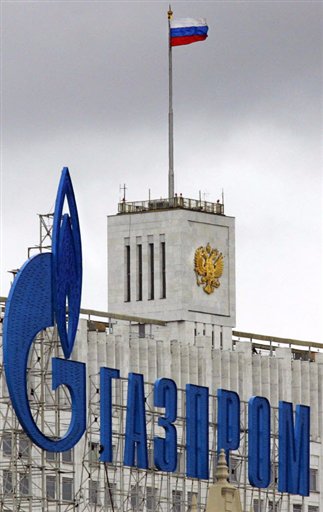
Russia Plans Far Eastern Energy Drive
Publication: Eurasia Daily Monitor Volume: 7 Issue: 130
By:

Russian officials have reiterated pledges to pursue pro-active Far Eastern energy policies, backed by sizable investments. Moscow would invest up to $100 billion to develop new natural gas deposits in the next five years, Deputy Prime Minister, Igor Sechin, announced (Interfax, RIA Novosti, June 18). Many of these new deposits are located in Eastern Siberia and Russia’s Far East.
Russia’s Far Eastern and East Siberian regions are expected to produce up to 150 billion cubic meters (bcm) of gas annually by 2020, according to Russian government estimates. Moscow has insisted that the country would have no trouble supplying gas to China and other Asian-Pacific nations as its East Siberian gas reserves exceed 65 trillion cubic meters (tcm).
State-run energy monopoly, Gazprom, also reiterated its plans to control natural gas resources in Russia’s vast eastern regions by taking over new gas deposits and forging new partnerships. In May 2010, Sechin announced that Gazprom started negotiations with South Korean companies to discuss joint projects to develop West Kamchatka off-shore gas deposits. In July 2009, Gazprom was granted licenses to develop West Kamchatka and Sakhalin-3 off-shore gas deposits. Gazprom pledged to cooperate with the state-run oil giant Rosneft to develop West Kamchatka gas deposits estimated to contain up to 2 tcm of gas reserves.
In recent years, Gazprom has repeatedly pledged to take over the largest gas fields in Eastern Siberia and the Far East. Hence, Gazprom moved to expand its presence in all four future gas production centers: Sakhalin, Yakutia, Krasnoyarsk and Irkutsk regions. The gas giant also sought tax breaks in the Far East, including zero gas export duty that would total $4.5 billion annually.
Meanwhile, Gazprom has conceded that its project to build a gas pipeline to China remains stalled and gas supplies via the Altai pipeline will not start in 2011 as earlier planned. In May, Sechin expressed hope that Russia and China might agree on gas prices by September this year.
Three years ago Moscow promised to export up to 40 bcm of Russian gas to China via a 6,700 kilometer, $10 billion, Altai pipeline. In March 2006, Gazprom and China National Petroleum Corporation (CNPC) signed a memorandum on the delivery of Russian natural gas to China from 2011, a follow-up to the partnership deal signed in October 2004. Subsequently, Gazprom reportedly offered to supply gas at European prices, while CNPC insisted on significantly lower gas prices (Interfax, March 26, 2006).
In October 2009, Gazprom and CNPC signed a framework agreement on gas supplies, including construction of a gas pipeline. Gazprom and CNPC agreed that gas prices would be connected with the “Asian oil basket.” The agreement reportedly did not involve any “gas for loans” schemes used in the agreement between Russia’s state-run oil company Rosneft and CNPC in April 2009. Russian officials had previously expected a final agreement on gas prices to be reached in June this year, and gas supplies to start in 2014-2015 (https://www.gazprom.com/press/news/2009/december/article72659/).
State-run Rosneft has also moved to increase its crude output in Siberia, relying on government support. On June 18, Rosneft head, Sergei Bogdanchikov, announced plans to produce 17 million tons of crude oil at Vankor deposit in Krasnoyarsk region. He also pledged to discover new oil deposits in Siberia (Interfax, June 18).
Rosneft apparently needs increases in crude production in Russia’s Far East and East Siberian regions in order to honor its contracts with China. In April 2009, the Chinese and Russian governments finalized an intergovernmental deal under which Russia will supply China with 300 million tons of crude for 20 years in exchange for $25 billion in loans to Russian state-run companies. According to the intergovernmental agreement, the branch’s construction would start in April and be completed by the end of 2010.
Not surprisingly, the Kremlin has been encouraging the country’s oil producers to increase output in regions close to Russia’s border with China. As a measure of direct state support, crude oil produced in Eastern Siberia is currently subject to a preferential export duty at zero rates. The measure was apparently aimed to encourage increased oil production in Russia’s Far East and East Siberian regions.
However, Russian authorities appeared to find that the country’s Far Eastern oil projects had already received enough state support. In recent weeks, the government has indicated plans to levy an export duty at $69.90 per barrel. On June 16, Igor Sechin, argued that the measure would yield by 2012 some 350 billion rubles ($11.3 billion) in revenues (Interfax, June 16).
Russia’s long-term energy strategy in its Far East and East Siberian regions appear to be based on assumptions of higher energy prices that would justify sizable investments in energy projects there. However, it remains a matter of debate as to whether this energy strategy might prove economically viable in the longer term.




